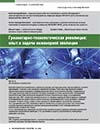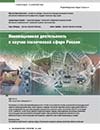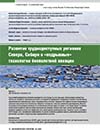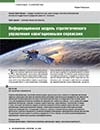Humanitarian and Technological Revolution: Experience and Challenges of Engineering Evolution
DOI: 10.33917/es-2.168.2020.54-63
Changing the priorities of economic development in transition to post-industrial society inevitably causes reviewing approaches to the role of innovation in modern economy. If in the era of industrial development of society innovations are considered mainly as a factor of technological development, in case of a post-industrial society innovations should be considered in a broader perspective. Innovative technologies in all their diversity are being introduced not only in the technological sphere, but also in education, in the service industry, housing and communal services, life support sphere, etc. The problem of shifting regions and separate territories to innovative development approaches is one of the key issues in forming an economy based on knowledge. “Nuclear” cities, where development of nuclear technologies is implemented both for defense and civilian purposes (nuclear power plants, nuclear fuel production, etc.), can be ideally used as territories of advanced social and economic development (TASED) primarily thanks to human potential of these cities. The article analyzes recent humanitarian and technological changes, called the “humanitarian technological revolution” (HTR), and their impact on the speed and effectiveness of innovative changes in this area






